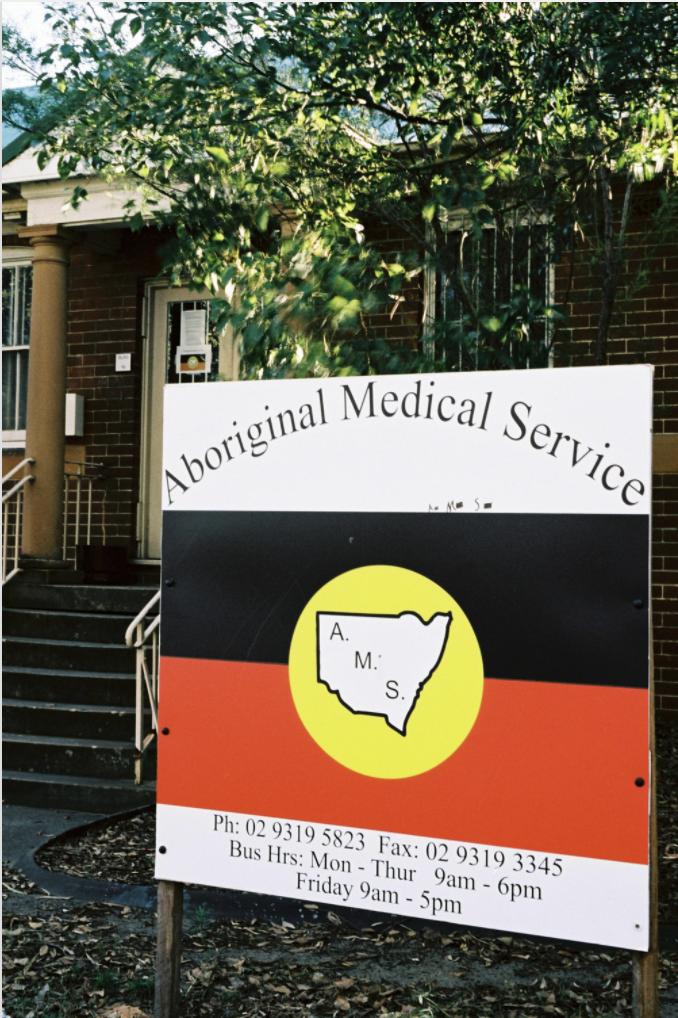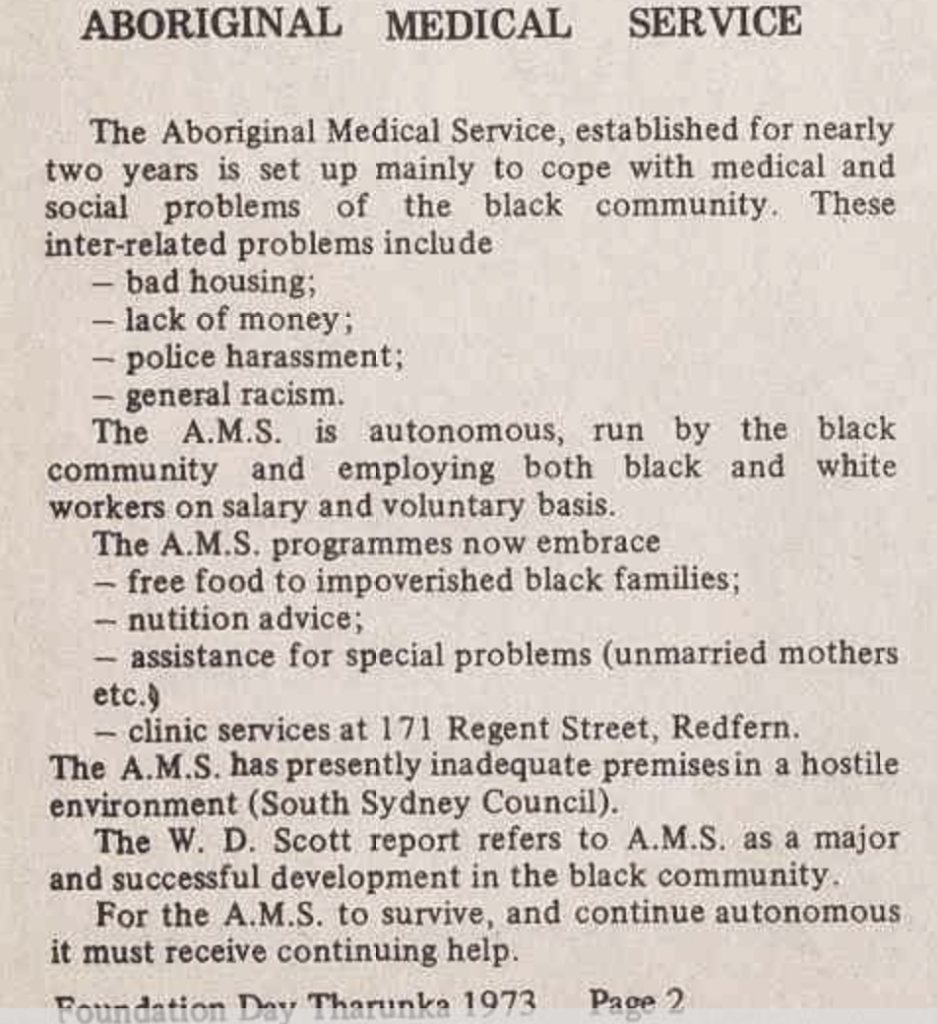This semester, I have worked alongside the Aboriginal Medical Service (AMS) in Redfern to develop a webpage that shares the organisation’s history as a centre of activism for both equal access to healthcare and Indigenous rights. The project emerged as a direct consequence of the COVID-19 pandemic and the impact that this had on the organisation in reducing its face to face operating hours and increasing the community demand for medical assistance. Therefore, the AMS’ priorities were heavily funnelled towards responding to the coronavirus, meaning that its less pertinent administrative projects were understandably side-lined. The idea of creating an easy-to-navigate and informative webpage that would share the organisation’s history with the Australian public therefore emerged in an effort to alleviate the AMS from the task of updating its website. I also thought that creating a space that shares Indigenous voices and centres the organisation’s longstanding concern with Aboriginal healthcare and equality would contribute towards building community trust in a period of considerable isolation and uncertainty.

To put it bluntly, my project aims to challenge the mainstream Australian conservative mantra that assumes “whiteness” as the default way of living. For instance, our national curriculum continues to be heavily influenced by European history and Western literature. Our federal government’s bushfire management plans are centred around Eurocentric understandings of the land rather than Indigenous knowledge. Our healthcare system continues to be obsessed with hypothetical deduction rather than acknowledging the role of spirituality and validity of bush medicine. Therefore, it is clear that our colonial past continues to haunt many of the powerful institutions in Australian contemporary society, continuing to centre “whiteness” whilst othering Aboriginal culture. My webpage counters this narrative by demonstrating how embracing traditional Indigenous constructs of health has played a major role in reducing Aboriginal mortality rates and supports “closing the gap” in healthcare, employment and education between Indigenous and non-Indigenous Australians.

Whilst my project is not yet complete, the journey so far has been one of ups and downs. What has been very motivating throughout the process has been learning about the widespread impact and significance that a single, small-scale local organisation can have. Moreover, communicating with those currently central to the AMS’ operation and hearing their personal stories about engaging with Redfern’s local community and the differences they made in individual’s lives was extremely uplifting. What excites me, is that the webpage I produce will be the only location that exists to date where all of this information about the history of Indigenous healthcare, the AMS and the quest for Indigenous equality is collated in a comprehensive and interactive media. Further, making this a public webpage means that it will have far greater accessibility than previous journal articles, which often require institutional access and subscriptions, or local exhibitions, which are inaccessible to those who live out of the area. In terms of the challenges, I am still struggling with the development of this webpage, especially its aesthetics and the construction of more technically challenging aspects such as a timeline. I am hoping that over the coming weeks, I will be able to improve on this to shift my project from an academic text to a more engaging way of learning.
Beyond this unit, I hope to remain in touch with the Aboriginal Medical Service. As a neuroscience major and someone passionate about equal access to healthcare, I am hoping that I sustain this relationship with the organisation and will be able to volunteer as a member of the medical staff once I complete my degree. Throughout the semester, I have been consistently amazed by the social progress that the AMS has pioneered and am excited by the prospect that my webpage will be a space that celebrates these achievements.
